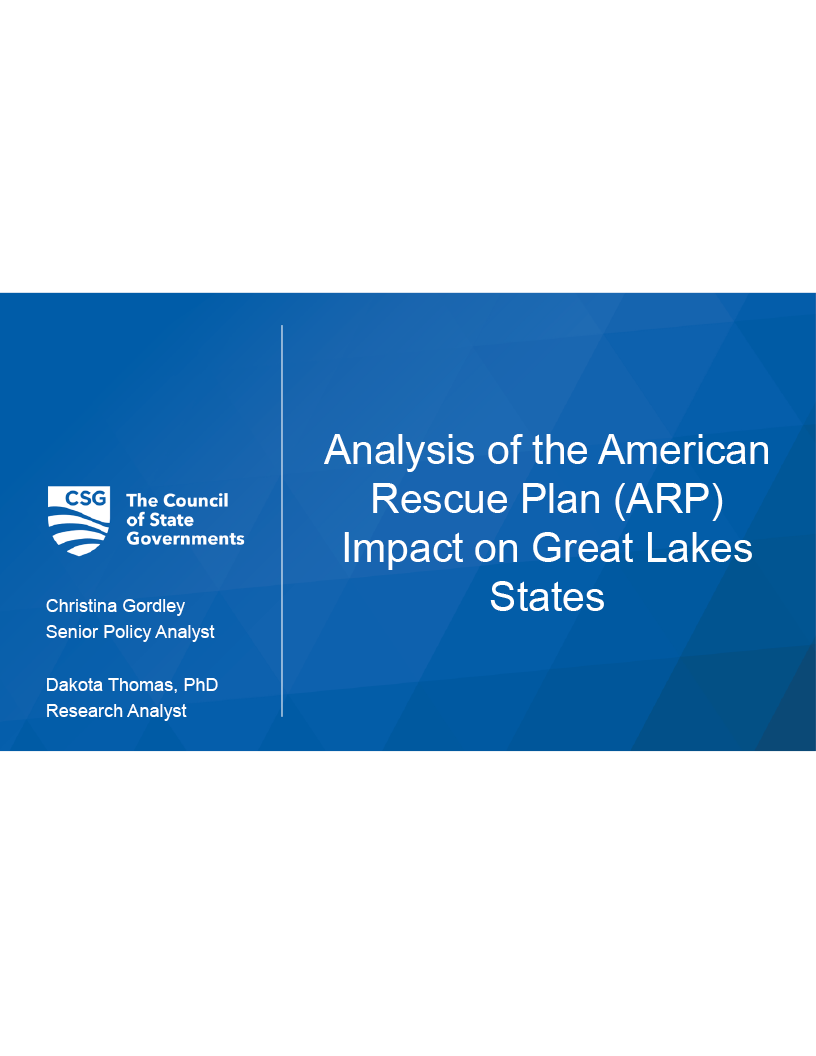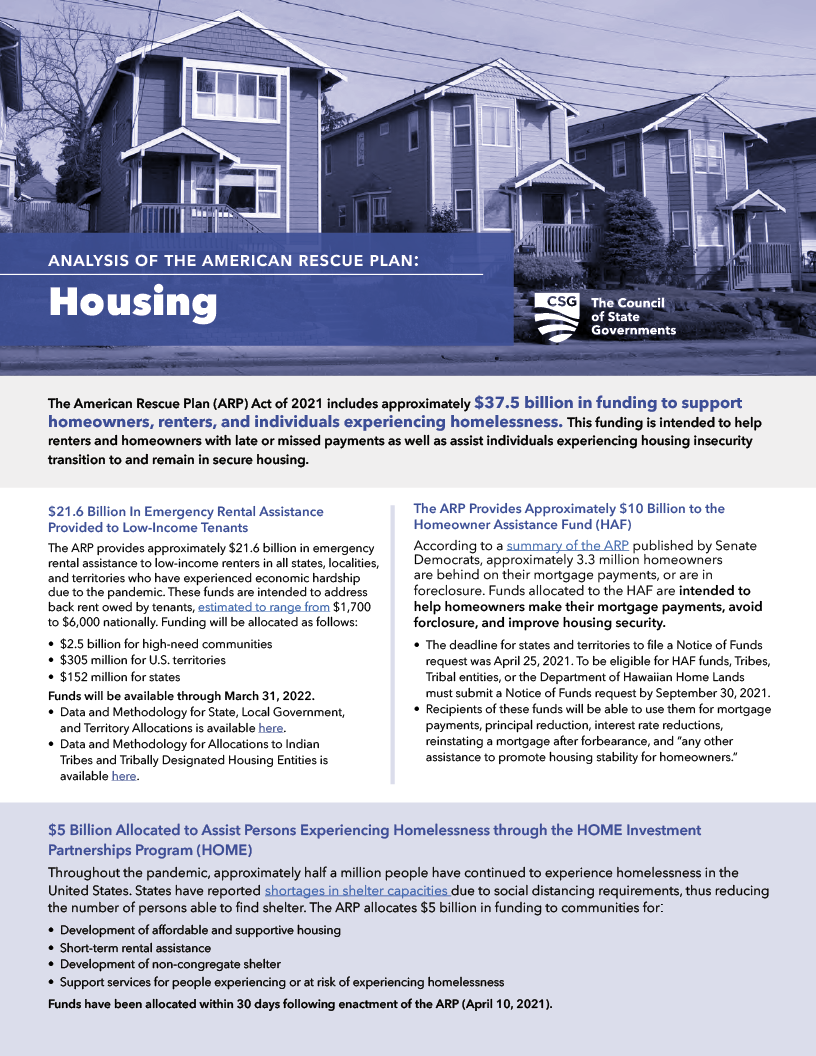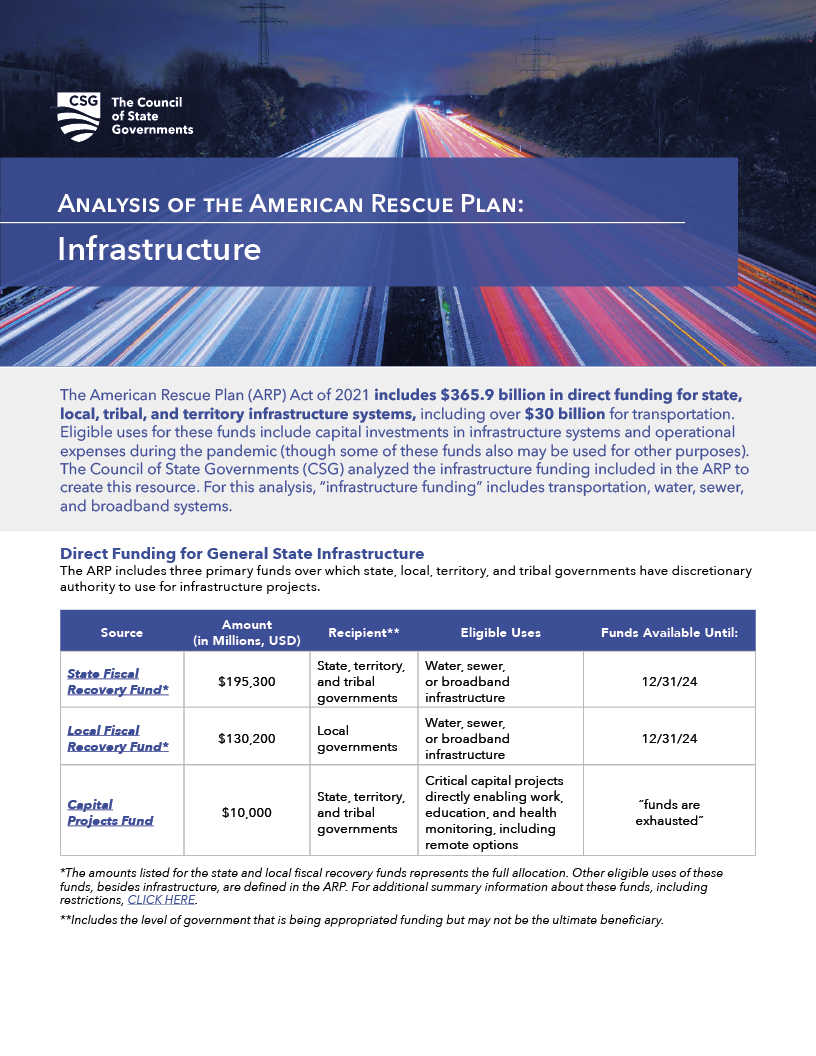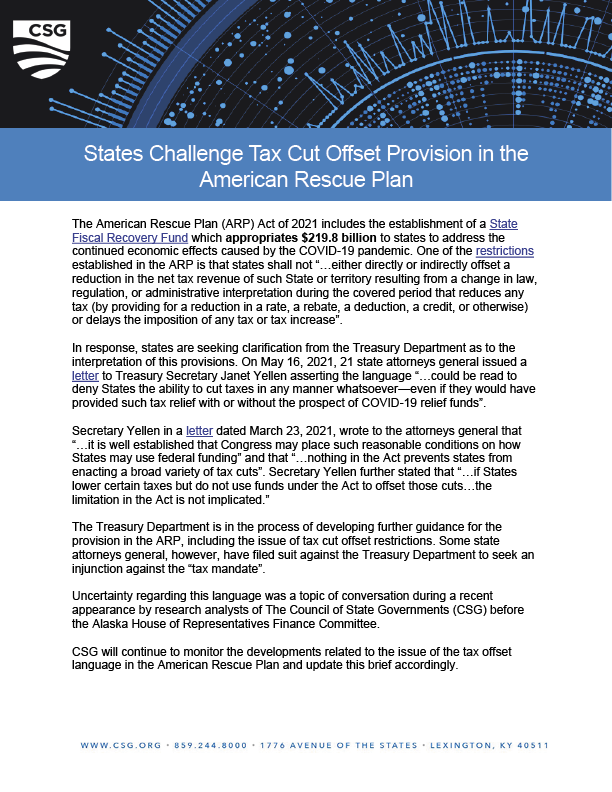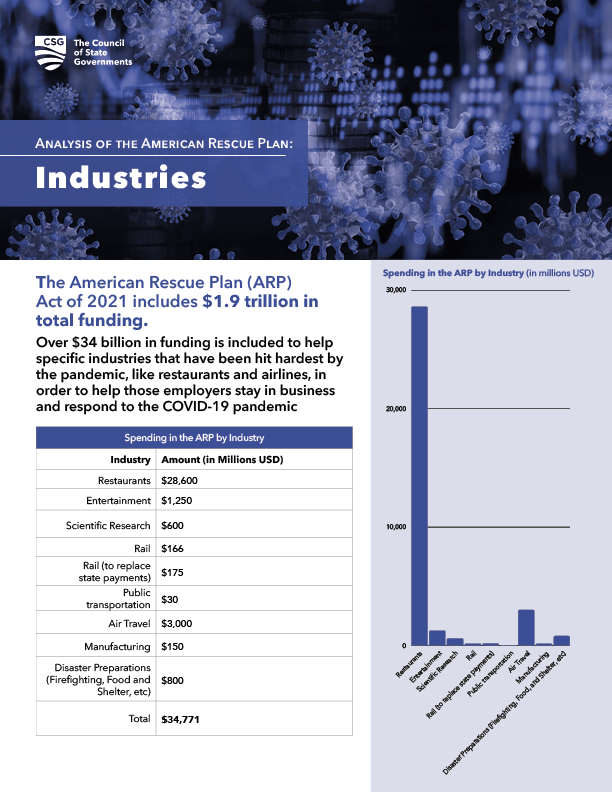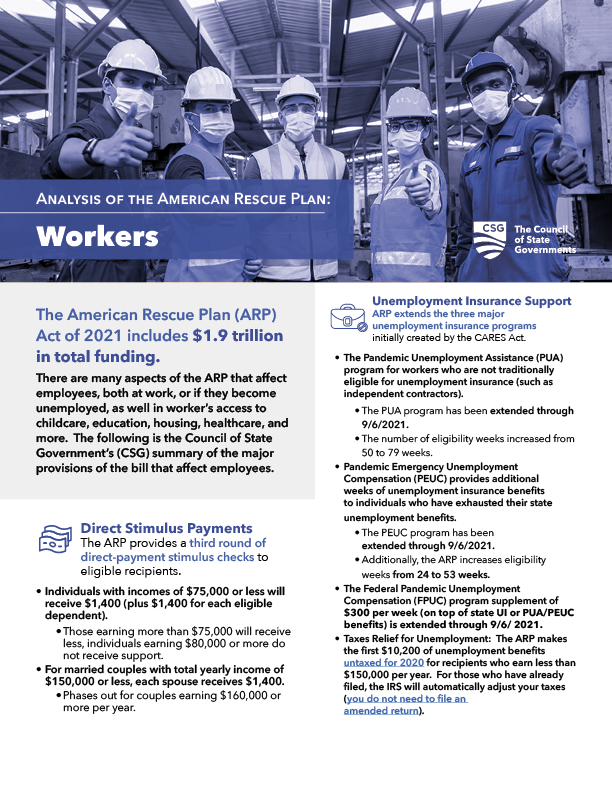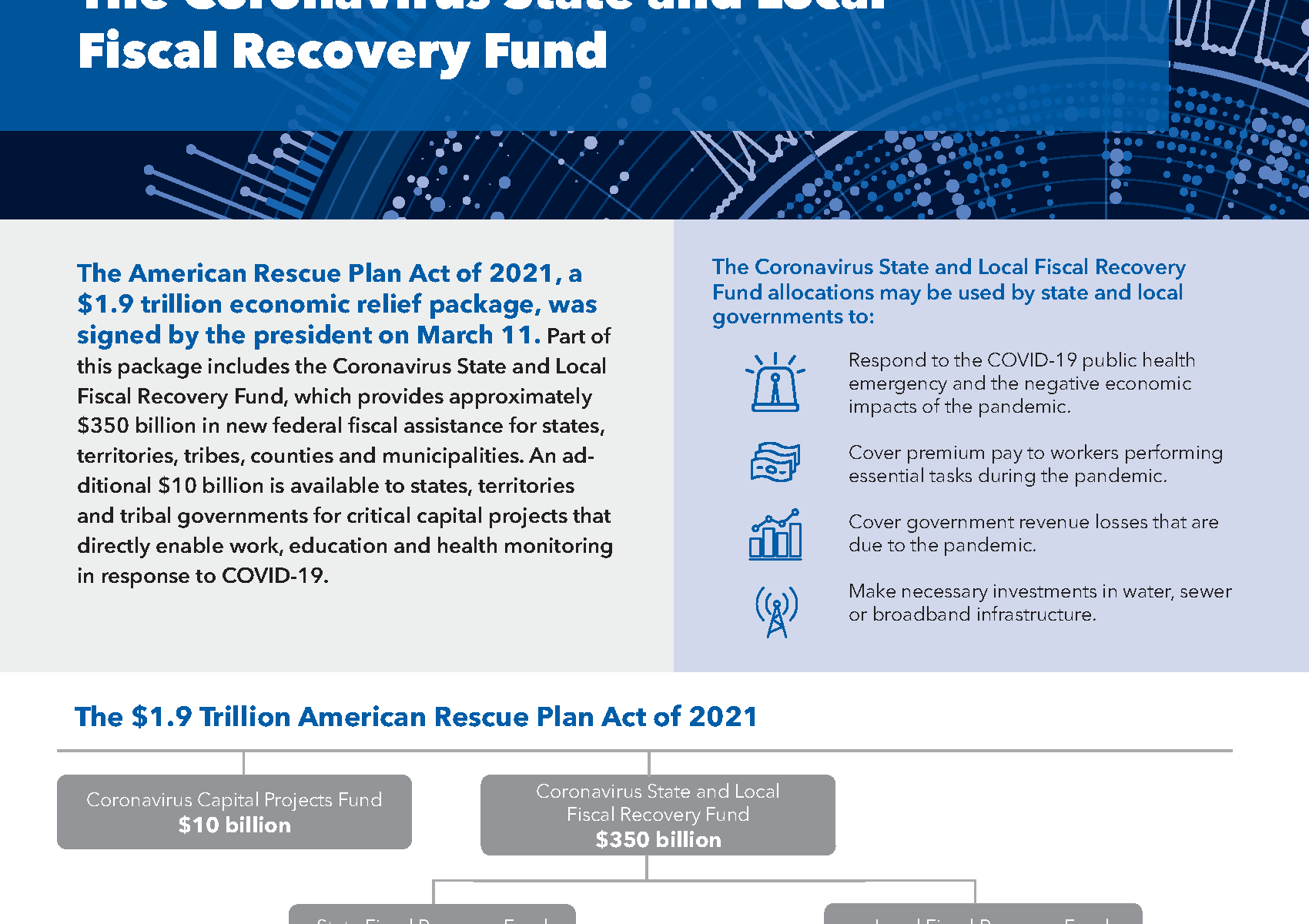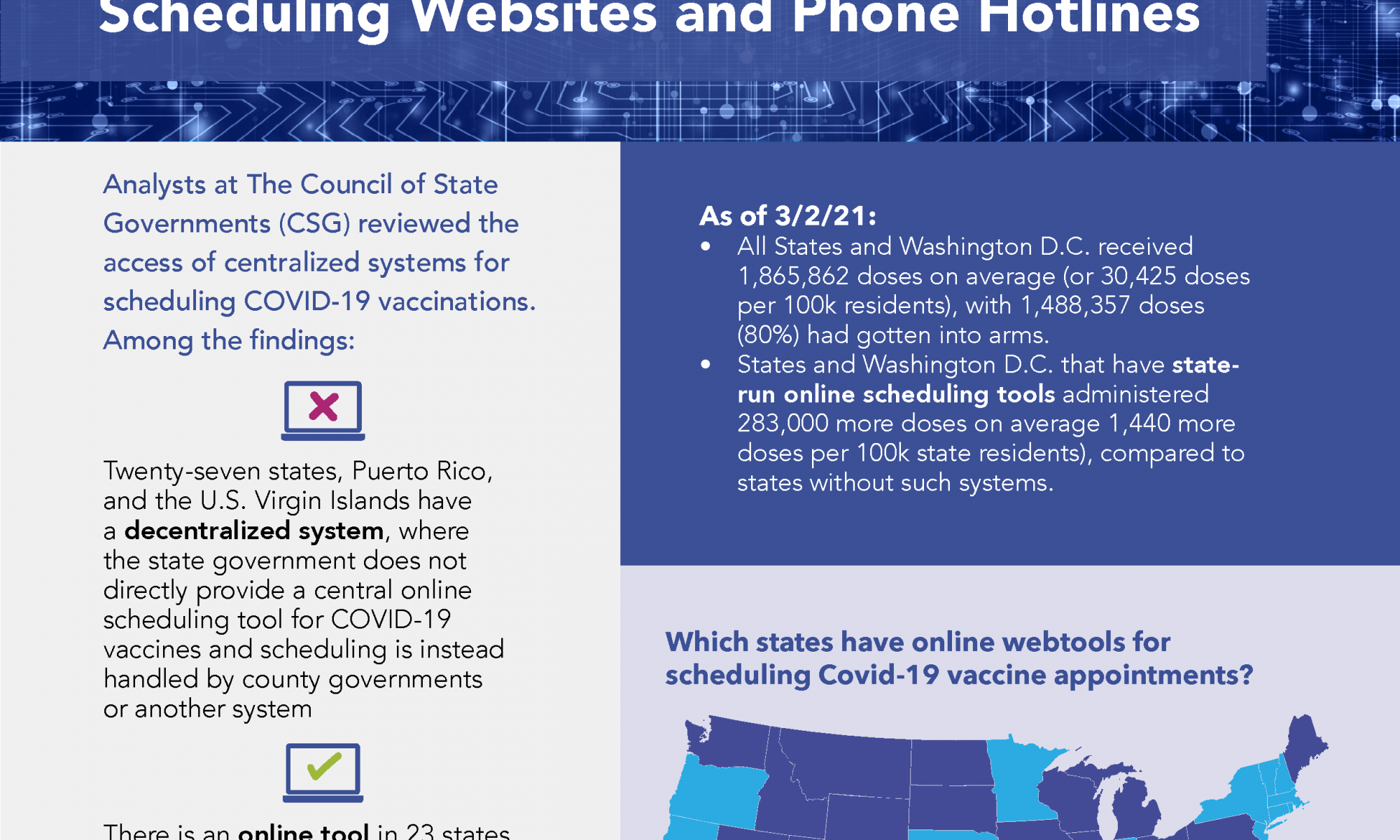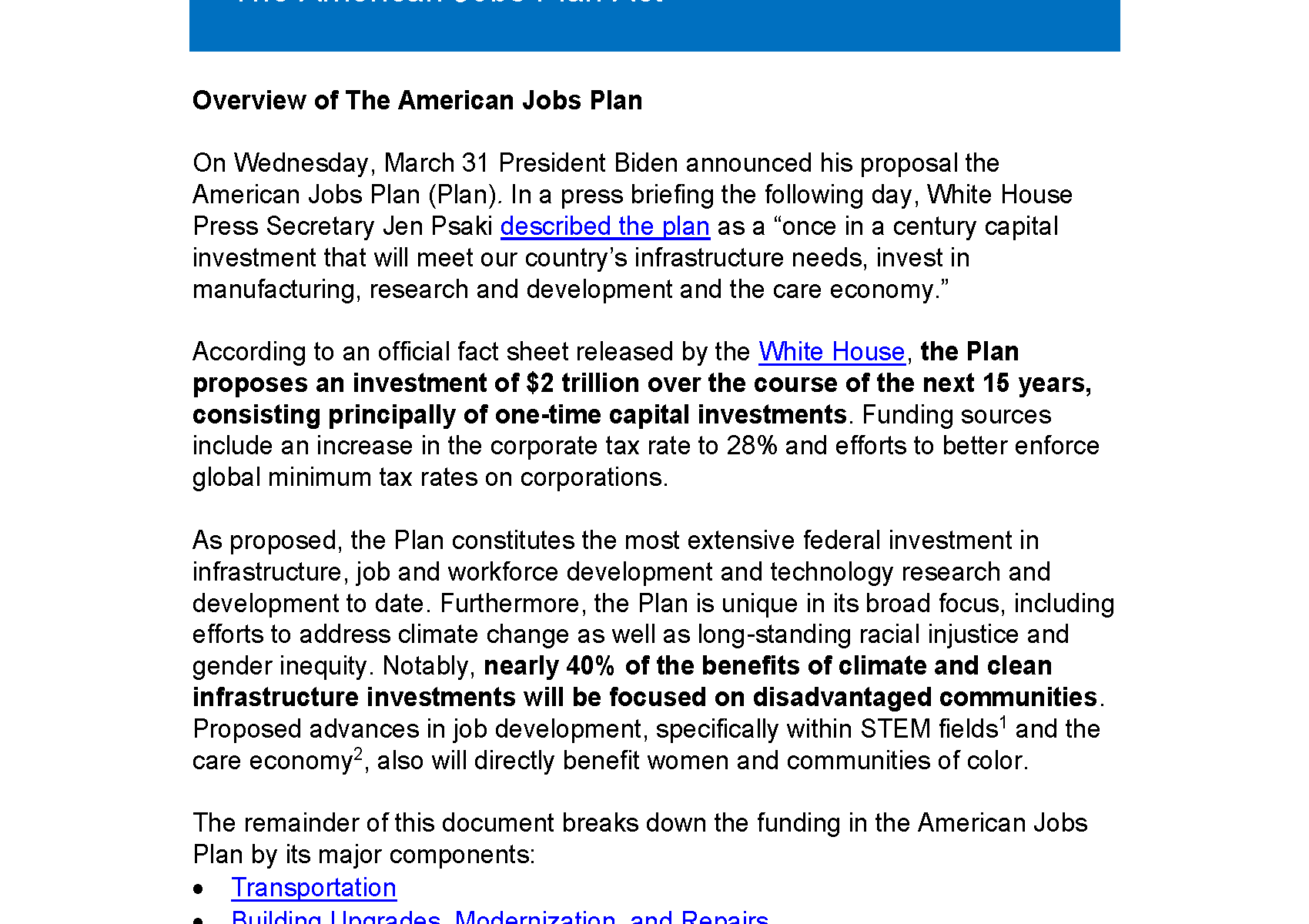Analysis of the American Rescue Plan – Housing
The American Rescue Plan (ARP) Act of 2021 includes approximately $37.5 billion in funding to support homeowners, renters, and individuals experiencing homelessness. This funding is intended to help renters and homeowners with late or missed payments as well as assist individuals experiencing housing insecurity transition to and remain in secure housing.
Analysis of the American Rescue Plan – Infrastructure
The American Rescue Plan (ARP) Act of 2021 includes $365.9 billion in direct funding for state, local, tribal, and territory infrastructure systems, including over $30 billion for transportation. Eligible uses for these funds include capital investments in infrastructure systems and operational expenses during the pandemic (though some of these funds also may be used for other purposes). The Council of State Governments (CSG) analyzed the infrastructure funding included in the ARP to create this resource. For this analysis, “infrastructure funding” includes transportation, water, sewer, and broadband systems.
States Challenge Tax Cut Offset Provision
The American Rescue Plan (ARP) Act of 2021 includes the establishment of a State Fiscal Recovery Fund which appropriates $219.8 billion to states to address the continued economic effects caused by the COVID-19 pandemic. One of the restrictions established in the ARP is that states shall not “…either directly or indirectly offset a reduction in the net tax revenue of such State or territory resulting from a change in law, regulation, or administrative interpretation during the covered period that reduces any tax (by providing for a reduction in a rate, a rebate, a deduction, a credit, or otherwise) or delays the imposition of any tax or tax increase”.
The Made in America Tax Plan
On March 31st, President Biden proposed the American Jobs Plan Act, intended to increase investment in infrastructure, manufacturing, clean energy and the care economy. To fund these efforts, the Biden administration recently proposed the Made in America Tax Plan (Plan) which is slated to generate approximately $2 trillion over the course of the next 15 years. According to The White House, the Plan would fully cover the costs of the American Jobs Plan and subsequently “reduce deficits on a permanent basis.” The plan is also intended to make American companies and works more competitive through instituting corporate tax reforms.
Analysis of the American Rescue Plan: Industries
The American Rescue Plan (ARP) Act of 2021 includes $1.9 trillion in total funding. Over $34 billion in funding is included to help specific industries that have been hit hardest by the pandemic, like restaurants and airlines, in order to help those employers stay in business and respond to the COVID-19 pandemic
Analysis of the American Rescue Plan: Workers
The American Rescue Plan (ARP) Act of 2021 includes $1.9 trillion in total funding. There are many aspects of the ARP that affect employees, both at work, or if they become unemployed, as well in worker’s access to childcare, education, housing, healthcare, and more. The following is the Council of State Government’s (CSG) summary of the major provisions of the bill that affect employees.
Analysis for States: The Coronavirus State and Local Fiscal Recovery Fund
The American Rescue Plan Act of 2021, a $1.9 trillion economic relief package, was signed by the president on March 11. Part of this package includes the Coronavirus State and Local Fiscal Recovery Fund, which provides approximately $350 billion in new federal fiscal assistance for states, territories, tribes, counties and municipalities. An additional $10 billion is available to states, territories and tribal governments for critical capital projects that directly enable work, education and health monitoring in response to COVID-19.
State Vaccination Tools
Twenty-seven states, Puerto Rico, and the U.S. Virgin Islands have a decentralized system, where the state government does not directly provide a central online scheduling tool for COVID-19 vaccines and scheduling is instead handled by county governments or another system
The American Jobs Plan Act
On Wednesday, March 31 President Biden announced his proposal the American Jobs Plan (Plan). In a press briefing the following day, White House Press Secretary Jen Psaki described the plan as a “once in a century capital investment that will meet our country’s infrastructure needs, invest in manufacturing, research and development and the care economy.”


